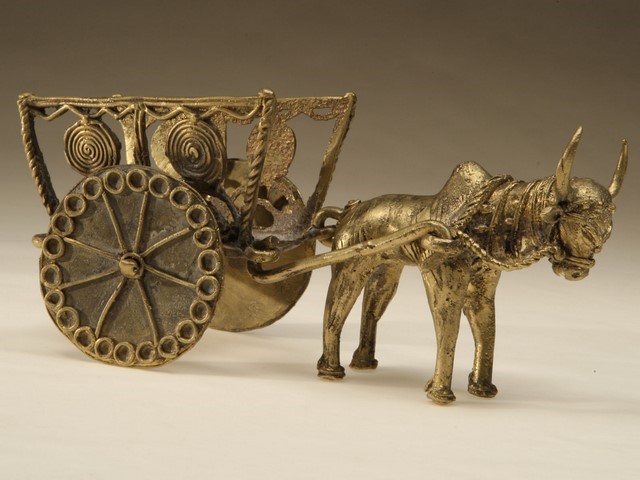22 Dec Dhokara Art
Dhokara Art
The topic talks about how Dhokara Art impacts Indian History, Arts, and Culture which is realated to daily current affairs for UPSC.
For Prelims: Ancient and modern forms of literature, architectural styles, and art forms.
For Mains: GS-1, Indian History, Art, and Culture.
About Dhokara Art
- One of the Indian nomadic tribes has been practicing it for centuries.
- It originates from the eras of Mohenjo Daro and Harappa.
- In essence, it is beautiful metal sculptures made from bronze and copper-based alloys using a process called “lost wax casting,” or “cire perdue” in French.
- The creation of a single piece of Dhokra art might take up to two months because there are numerous steps involved.
- It began in West Bengal, but when the tribes dispersed through time to Jharkhand, West Bengal, Orissa, and Chhattisgarh as well as areas like Kerala and Rajasthan, it eventually expanded throughout all of India.
- The well-known dancing girl from Mohenjo-Daro is the oldest specimen to have used it.
- Traditional metalworkers in West Bengal and Odisha come from the Dhokra Damar tribe. Dhokra metal casting is the name of their lost wax casting method, which is called by their tribe.
- The Geographical Indication (GI) designation for West Bengali Dhokra crafts was presented in May 2018.
- Recent modifications to the skill include the removal of beeswax, which was once a key ingredient but is now prohibitively expensive and difficult to find.
- Slowly, more practical items like paperweights and pen holders are taking the place of traditional animal figures like horses, elephants, camels, and so on.

Pic: Dhokara Art
Decline phase of the Art
- Due to the steadily rising cost of raw materials, which renders the finished goods much too expensive to draw in sufficient customers, the art form is clearly in decline.
- Due to the decrease in demand, artists have also been less interested in creating such masterpieces.
- Although there is still a significant demand for these sculptures in domestic and international markets, manufacturing is delayed due to the use of antiquated methods and a lack of access to new technologies.
UPSC PREVIOUS YEARS QUESTIONS:
QUES. Kalamkari painting refers to
(a) a hand-painted cotton textile in South India
(b) a handmade drawing on bamboo handicrafts in NorthEast India.
(c) a block-painted woolen cloth in the Western Himalayan region of India
(d) a hand-painted decorative silk cloth in North-Western India.
Solution: A
QUES. With reference to India’s culture and tradition, what is ‘Kalaripayattu’?
(a) It is an ancient Bhakti cult of Shaivism still prevalent in some parts of South India
(b) It is an ancient style bronze and brass work still found in the southern part of the Coromandel area
(c) It is an ancient form of dance-drama and a living tradition in the northern part of Malabar.
(d) It is an ancient martial art and a living tradition in some parts of South India.
Solution: D
Source:
Daily Current Affairs for UPSC
Plutus IAS provides the best and most updated daily current affairs for the UPSC exam. Also, Toady read weekly, and monthly current affairs for IAS exam preparation.
Download the PDF Now:



No Comments